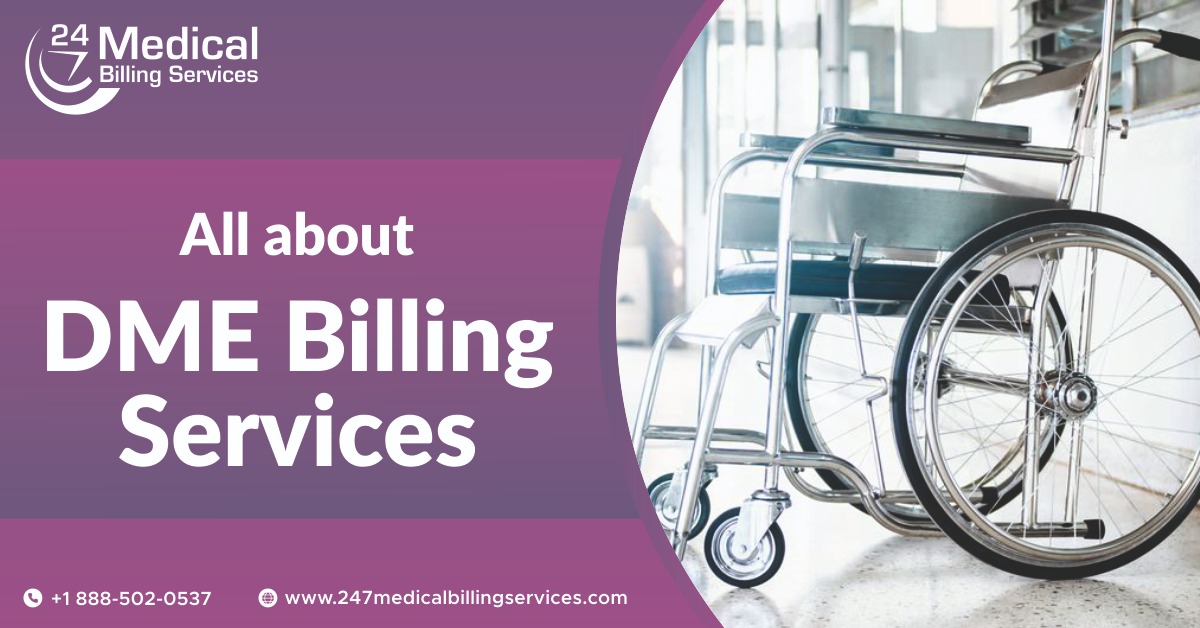
All about DME Billing Services
Due to the regulatory compliances, the DME has been undergoing perennial renovations. As a result, it can prove to be a challenge for you to keep updated with the constantly changing DME billing landscape. Did you know? The DME consists of 2% of the annual expenditure for Medicare. That's why claim denials are one of the most challenging causes for healthcare professionals when it comes to billing Durable Medical Equipment. This means that not all DME billing claims offer revenue reimbursements.
Though the reasons and causes may vary, there is one similarity that they indicate a major change in the revenue cycle for a healthcare provider. Therefore, DME billing services should be taken care of with a lot of precision and accuracy, as even a slight mistake can lead to slow productivity and loss of revenue.
What is DME Billing and Coding?
Durable Medical Equipment refers to the therapeutic equipment prescribed to patients suffering from certain adverse medical conditions. Nowadays, DME billing companies, coding specialists, and data analysts use a customized DME coding system. It is more like a DME directory for healthcare services. In fact, it acts as a bible for the distributors and the vendors for handling and tracking the DME billing services so that claims don’t get missed. However, you should also know that the DME coding system can never be an alternative to the HCPCS releases.
DME Billing and Insurance Coverage Indications:
When a patient has the DME benefits and equipment suggested for him by the healthcare professionals to treat a long-term illness, it gets covered in the DME billing services. Otherwise, the equipment is not included in the patient benefit plan.
- For the purpose of DME billing, the DME should not be disposable or consumable unless it is essential for the effective use of the same.
- In the absence of any disability or illness, a patient cannot use the DME.
- The DME must be ordered by a healthcare professional for use in the home setting for an outpatient.
- DME must only be used for medical purposes.
DME Billing Coverage Limitations and Exclusions:
- When a patient uses one or more DME to meet his disease need, the coverage benefit is only applicable for a single DME with the minimum specifications for the requirements of the patients. They must include:
- Standard power wheelchair vs. custom wheelchair.
- Standard bed vs. the semi-electric bed or the floating bed or complete electric bed.
- This is a limitation that intends to eliminate the coverage for the deluxe DME or the additional components of the equipment. It is not necessary to meet the minimum specifications of the patient for the treatment of a chronic illness.
- If a patient rents or buys a DME that exceeds the guidelines mentioned above, he is also responsible for the cost difference of the devices purchased or rented.
The DME billing services exclude certain coverage that includes:
- Accessories that are included in the DME services and are meant for the comfort of the patient. These devices will not be covered by insurance companies:
- Air filters
- Air conditioners
- Batteries for the nonmedical devices
- Humidifiers
- Nonmedical devices for mobility
- Remodeling or modification of the DME devices for home or vehicle to accommodate the DME.
Covered DME billing services:
DME billing services include the various pharma products or supplies to determine that:
- DME is provided for preventing or evaluating, diagnosing, or treating a chronic disease or injury, mental illness, or addictive disorder.
- DME is a medical necessity.
- Anything that is not excluded from the covered services.
3 Helpful Tips to Follow for Billing Guidelines
DME billing needs accurate coding that ensures correct claims submission, mainly when any updates occur. Here are three tips that can help you in creating an efficient billing process so that you are ready even when guidelines change:
#1 Provide Correct Documentation
Accurate claims submission requires proper documentation with precise coding. This also includes verifying with the insurance companies whether specific documentation is required before submitting a claim. This, in return, will prevent claim denials in case an insurance company updates its policies.
HCPCS Level II code ending in 99
If and when an HCPCS code ends in “99”, you must provide the support documents along with the claim. If the documents are missing with the paperwork, the claim gets suspended by the insurance company until the documents are provided and reviewed (this can result in delayed payment of the claims).
#2 Establish Medical Necessity
The patient needs to show their medical records before receiving a DME. The records must show that there is a medical necessity for the DME to treat their diagnosed condition. Local Coverage Determinations (LCDs) are policies that portray the requirements for the DME items. Understanding the specific LCDs for a particular locality will ensure you get the correct reimbursements for the claims submitted.
#3 Streamline your Billing Services
When you have a DME billing system in place, you will be able to streamline the process of claim submission. In case of a guideline change, having an efficient billing process will help you adjust to the changes without delaying the claims submission process.
Track and monitor your process by outsourcing Durable Medical Equipment (DME) billing to 24/7 Medical Billing Services. Our team can help you identify the issues and realize the full potential growth of your clinic.
Read more: Durable Medical Equipment, Prosthetics Orthotics & Supplies (DMEPOS) Fee Schedule

.png)